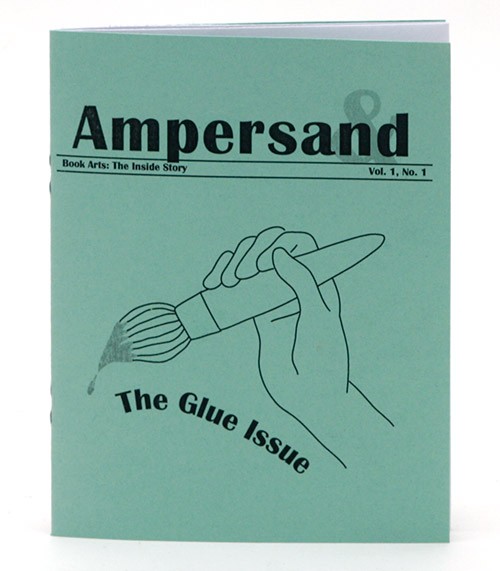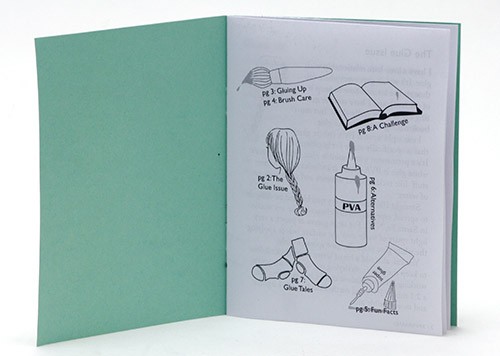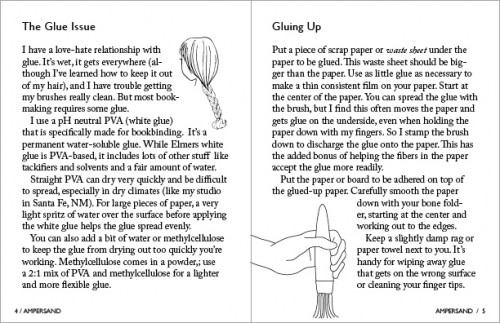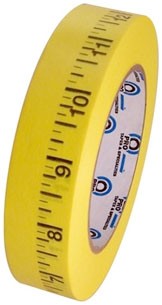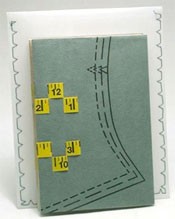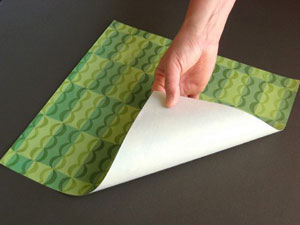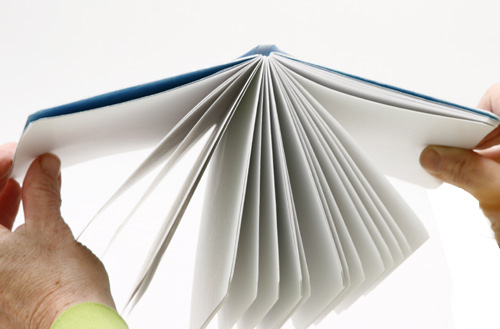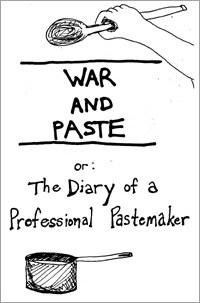The word for our group prompt challenge this month was agglutinate:
verb tr., intr.:
1. To form words by combining words or word elements.
2. To join or become joined as if by glue.
3. To clump or cause to clump, as red blood cells.
I went straight for the 2nd definition as it seemed like a good bookbinding term! For 5 years, I edited the quarterly magazine for a book arts group in California. The part I liked the best was doing the layout (soliciting articles, not so much). And I miss the layout challenges. So my plan for agglutinate was to make a zine or small magazine about glue.
![]() Glue is messy, and I tried to incorporate that into my zine. But old habits and preferences are hard to break, and the pages are pretty block-y and standard.
Glue is messy, and I tried to incorporate that into my zine. But old habits and preferences are hard to break, and the pages are pretty block-y and standard.
Here’s the cover, followed by the table of contents and then one of the spreads. I did have a good time writing the little articles and thinking about all my own glue messes. Especially the time my husband and I installed a glue-down floor in my studio—the glue was thick mucus looking stuff and, as glue will, it got everywhere. But it didn’t help that I absently stepped on the glue brush in my stocking feet, getting glue all over the floor and in my own shoe.
